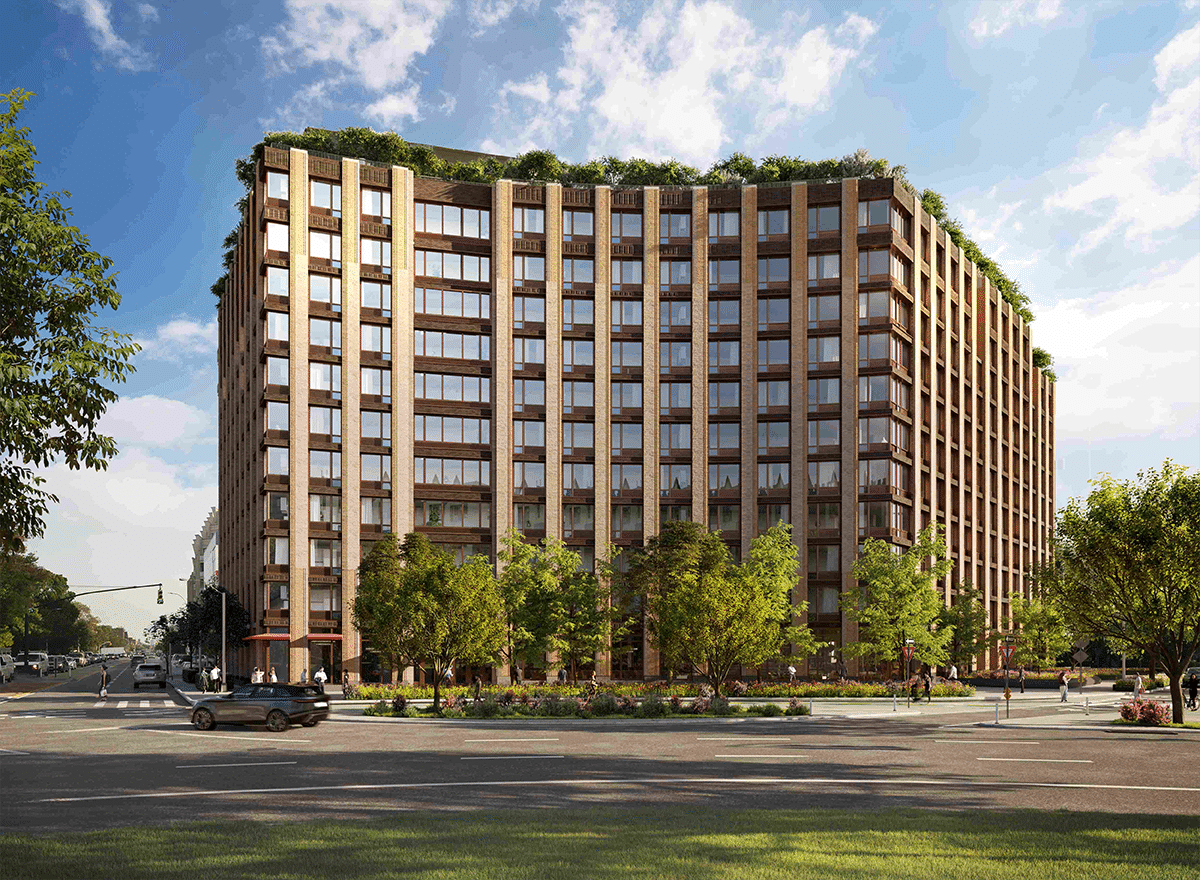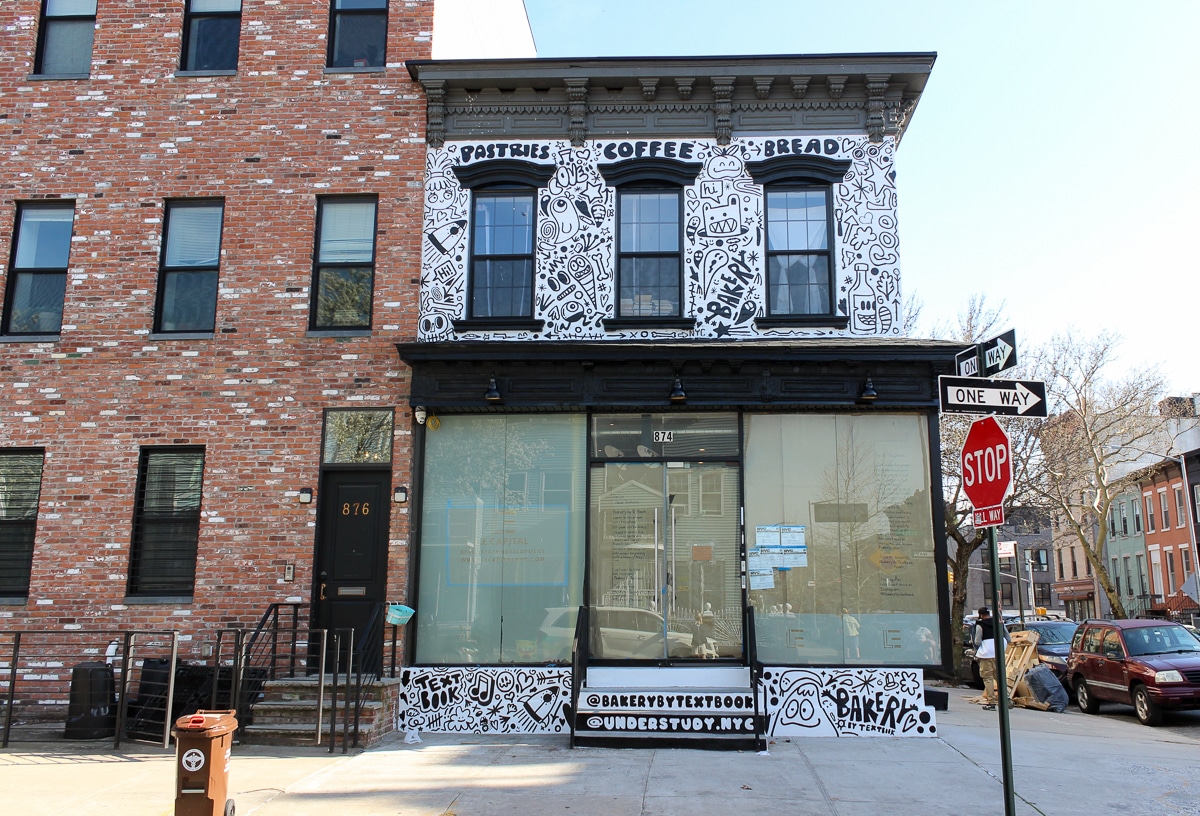Past and Present: Nassau Brewing Company
A look at Brooklyn, then and now. In the beginning were the hops, the malt, the water, and the recipe for lager beer. The frothy brew has long been a staple of Brooklyn life, since the first German brewmeisters came to our shores and brought their recipes with them. Most of the breweries were concentrated…

A look at Brooklyn, then and now.
In the beginning were the hops, the malt, the water, and the recipe for lager beer. The frothy brew has long been a staple of Brooklyn life, since the first German brewmeisters came to our shores and brought their recipes with them. Most of the breweries were concentrated around the German communities in Bushwick and Williamsburg, but it didn’t take long for facilities to be founded elsewhere and in some cases, these buildings outlasted the others, as residential and commercial development changed. Here, in the Crow Hill section of Crown Heights North, there has been a brewery on Bergen Street and Franklin Avenue since 1849, when the Liberger and Walter Brewing Company was established. In 1866, the brewery was bought by Christian Goetz, who renamed it the Bedford Brewery.
They brewed lager, fast becoming the most popular beer in Brooklyn, made of imported Bavarian hops and malt. By 1868, the Brooklyn Eagle reported that the Bedford Brewery’s Excelsior lager was hailed the best of the Western District’s beers, and that the brewery was the fourth largest maker of beer in this part of Brooklyn. In 1879, they were the tenth largest brewery anywhere in Brooklyn. By 1883, the Bedford Brewery also had a very popular retail alehouse, which was cited for selling beer on Sunday’s, a serious offence that almost closed them down.
Christian Goetz was mortgaged to the hilt at that time, and decided to sell the brewery to businessman William Brown and a group of investors. Brown, who had a lot of experience in the brewing industry, upgraded the equipment, added a new factory building, an ice house, hoppers and other equipment, upping the output of the facility, tripling the amount of beer produced just in the space of a year. He then went to Europe’s lager country to find the perfect recipe to bring back to America. In the town of Budweis, in Bohemian Czechoslovakia, he found the perfect marriage of hops and malt, and when he got back home, he called his new beer, and the brewery making it, “Budweiser.”
By 1895 were offering Extra Bohemian, Rialto, Private Stock and Frankenbrau, among others. The company expanded their market far beyond Brooklyn, and were especially popular in Boston and other parts of New England. Apparently they didn’t know about the Anheuser-Busch Company, and their little beer called Budweiser, which A-B had trademarked in 1876. Anheuser sued, and by 1898, Brown could see that he would lose, and changed the name of the company to the Nassau Brewing Company. He ceased selling his Budweiser beer under that name. The Nassau Brewing Company brewed beer on Franklin, Bergen and Dean until 1914.
Soon afterward, the complex was acquired by the HJ Heinz Company, which emblazoned their name and slogan on the newest and largest of the brewery buildings. They produced canned goods in the factory for many years, well past World War II. Smaller companies found homes in the out buildings, and the building shown in the 1907 Brooklyn Eagle photograph was now home to a used car and auto body shop called “Standard Body and Equipment”, as seen in a 1941 photograph.
But as the fortunes of Central Brooklyn declined, so too did this section of Crown Heights, a semi-industrial enclave between two very residential areas. Car body shops, warehouse space, and parking garages became the main industries, and by 2001, the old Nassau Brewery belonged to a moving and storage company, which had allowed much of the old complex to deteriorate badly. Most of the buildings were not even being used, and were empty except for rats and pigeons.
The turn-around began when Sue Boyle and Benton Brown bought the Nassau Brewery buildings that year, acquiring the entire complex in order to be able to buy the ice house; the best of the buildings, on Dean Street, between Franklin and Classon. Their renovation of the ice house garnered them many awards and started new careers for both of them. They also kept the large “Heinz” building, which is now workspace for artists and small industry. In order to finance their projects, Benton and Boyle sold the rest of the brewery complex to investors who have had long standing plans to turn this building and the older building in front of it, as well as other parts of the complex, into housing and retail space. Those plans have been off and on for the last decade. Promises were made to keep the factory buildings’ facades, so that the Nassau Brewery can once more be a destination and a viable part of the community. GMAP












What's Your Take? Leave a Comment